#Edward Warschilka
Photo



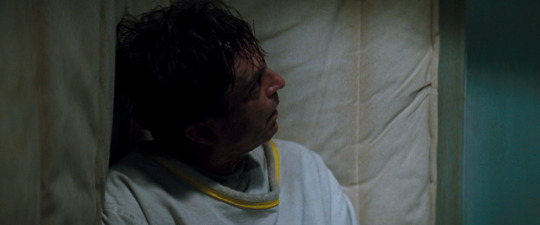






In the Mouth of Madness (John Carpenter, 1994).
#in the mouth of madness#in the mouth of madness (1994)#john carpenter#sam neill#gary b. kibbe#edward a. warschilka#jeff ginn#peter grundy#elinor rose galbraith#robin michel bush
62 notes
·
View notes
Text
Il seme della follia
Il seme della follia
Benvenuti o bentornati sul nostro blog. Nello scorso articolo siamo nuovamente tornati a parlare di uno dei miei generi preferiti in assoluto, l’horror, attraverso una pellicola davvero molto particolare ossia Baby. La storia di una giovane donna tossicodipendente che ha avuto da poco un bambino e, per disperazione e capendo che non riuscirà ad accudire il piccolo, decide di darlo a una donna…

View On WordPress
#Apocalypse Trilogy#Bruce Nicholson#Charlton Heston#David Warner#dottor Wrenn#Edgar Allan Poe#Edward A. Warschilka#fantasy#film#finzione#Gary B. Kibbe#Greg Nicotero#H. P. Lovecraft#horror#Howard Phillips Lovecraft#Il seme della follia#In the Mouth of Madness#Industrial Light & Magic#Jürgen Prochnow#Jeff Steven Ginn#John Carpenter#John Glover#John Trent#Julie Carmen#La Trilogia dell&039;Apocalisse#Linda Styles#lovecraft#metacinema#Michael de Luca#mostri
0 notes
Text
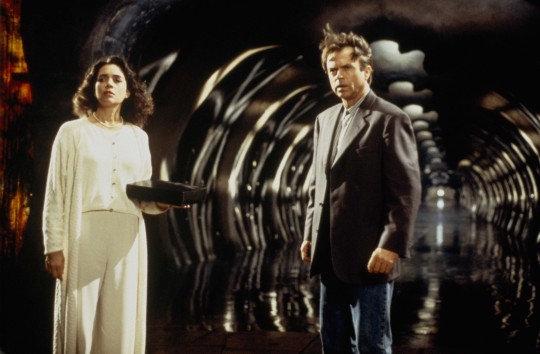
Julie Carmen and Sam Neill in In the Mouth of Madness (John Carpenter, 1994)
Cast: Sam Neill, Julie Carmen, Jürgen Prochnow, David Warner, John Glover, Bernie Casey, Peter Jason, Charlton Heston, Frances Bay. Screenplay: Michael De Luca. Cinematography: Gary B. Kibbe. Production design: Jeff Ginn. Film editing: Edward Warschilka. Music: John Carpenter, Jim Lang.
A box office failure in its theatrical debut, John Carpenter's cleverly recursive In the Mouth of Madness has since gathered an enthusiastic following. I'm not one of the enthusiasts -- I find it much too frantic to be very scary, entertaining, or thought-provoking -- but I see what they like about it. It's partly a satiric look at the popularity of horror fiction and its movie spinoffs, centering on an obvious target: Stephen King. In the film, the horror writer is called Sutter Cane (Jürgen Prochnow), who lives in New Hampshire (next door to Maine, where King lives). Maybe to avoid any legal problems, the analogy is made explicit in the movie: King is name-checked several times. The other obvious horror writer target is H.P. Lovecraft, who isn't mentioned, but he's dead and can't sue. One reason for my discontent with In the Mouth of Madness is the miscasting of Sam Neill, who plays an insurance investigator who gets caught up in the search for Sutter Cane and his latest manuscript. Neill is one of my favorite underappreciated actors, but he seems all at sea here: Even his well-practiced American accent is sometimes clotted with his native New Zealand vowels. The role, which has a comic undertone, needs a more smart-alecky performer like Jim Carrey or Bill Murray. But then most of the cast -- including a cameo by Charlton Heston and a screen debut by Hayden Christensen as a paperboy -- is just along for the ride as the special effects and the plot kinks mount up.
2 notes
·
View notes
Video
youtube
La Bambola Assassina (film 1988) TRAILER ITALIANO
La bambola assassina 1988
La bambola assassina
Chucky (Brad Dourif) tentando di possedere l'anima di Andy Barclay (Alex Vincent) in una scena del film
Titolo originale Child's Play
Lingua originale inglese
Paese di produzione Stati Uniti d'America
Anno 1988
Durata 87 min
Rapporto 1,85:1
Genere orrore, thriller
Regia Tom Holland
Soggetto Don Mancini
Sceneggiatura Don Mancini, Tom Holland, John Lafia
Produttore David Kirschner
Produttore esecutivo Barrie M. Osbourne
Casa di produzione United Artists
Fotografia Bill Butler
Montaggio Roy E. Peterson, Edward A. Warschilka
Effetti speciali Kevin Yagher
Musiche Joe Renzetti
Scenografia Daniel A. Lomino
Costumi April Ferry Toth
Interpreti e personaggi
Alex Vincent: Andy Barclay
Catherine Hicks: Karen Barclay
Chris Sarandon: detective Mike Norris
Brad Dourif: Charles Lee Ray / Chucky
Dinah Manoff: Maggie Peterson
Neil Giuntoli: Eddie Caputo
Tommy Swerdlow: Jack Santos
Raymond Oliver: John "Dottor Death" Bishop
Jack Colvin: dottor Ardmore
Alan Wilder: Walter Criswell
Doppiatori originali
Brad Dourif: Chucky
Doppiatori italiani
Alessandro Tiberi: Andy Barclay
Silvia Pepitoni: Karen Barclay
Saverio Moriones: detective Mike Norris
Renato Cortesi: Chucky
Monica Ward: Tipo Bello
Liliana Sorrentino: Maggie Peterson
Carlo Valli: Jack Santos
Massimo Foschi: John "Dottor Death" Bishop
Franco Zucca: dottor Ardmore
Logo ufficiale del film
La bambola assassina (Child's Play) è un film horror statunitense del 1988 diretto da Tom Holland. Uscito nelle sale il 9 novembre 1988, ha come personaggio principale una bambola di nome Chucky, all'interno della quale un serial-killer ha riversato la propria anima in punto di morte; il suo scopo è quello di rientrare in un corpo umano, precisamente il corpo della prima persona alla quale ha rivelato la sua vera identità, ed in breve tempo, altrimenti rimarrà intrappolato per sempre nel pupazzo. Per tale obiettivo dovrà scegliere Andy, un bambino che riceve la bambola come regalo di compleanno. Sadico, crudele, astuto e determinato, Chucky riuscirà quasi nel suo intento, mietendo numerose vittime sul suo cammino.
Il film venne distribuito negli Stati Uniti il 9 novembre 1988 dalla MGM/UA Communications Co. ed incassò più di 44 milioni di dollari a fronte di un budget di produzione di 9 milioni di dollari.[1][2][3]
Il fatto che sia divenuto un cult,[4] e il successo ottenuto al botteghino, hanno generato un media franchise che include una serie di sei sequel, merchandising, fumetti, un film reboot uscito nel giugno 2019 e una serie televisiva che è iniziata nell'ottobre 2021.
Nella notte del 9 Novembre 1988, il famigerato strangolatore e serial killer di Chicago Charles Lee Ray, stanato dalla polizia, è inseguito fra le strade della città dal detective Mike Norris. Dopo essere stato ferito alla gamba, Charles tenta di raggiungere il furgone sul quale lo attende il complice Eddie Caputo ma questi, vedendo il trambusto e una macchina della polizia in avvicinamento, fugge abbandonando l'amico. Ormai privo di speranze, Charles si rifugia in un negozio di giocattoli dove Norris gli spara, giurando vendetta contro il detective e il compagno che lo ha tradito, mette in pratica un rito voodoo su un bambolotto "Tipo Bello" per trasferire la sua anima al suo interno, il rito causa una tempesta di fulmini sul negozio, che ne provoca l'esplosione, Norris sopravvive e ritrova il cadavere dello strangolatore con il bambolotto accanto.
Il mattino seguente, Andy Barclay chiede alla madre Karen un bambolotto "Tipo Bello" come regalo per il suo sesto compleanno. Essendo in ristrettezze economiche, Karen acquista un "Tipo Bello" da un vagabondo, all'insaputa di tutti, il bambolotto acquistato si rivela essere proprio quello posseduto dall'anima del serial killer il quale, dopo essersi presentato ad Andy come Chucky, miete la sua prima vittima, Maggie Peterson un'amica di Karen che stava facendo da babysitter ad Andy, facendola precipitare dalla finestra del condominio dopo averla colpita in faccia con un martello giocattolo. Sulla scena del crimine, Andy cerca di convincere il detective Norris che l'assassino è il suo bambolotto Chucky ma non viene creduto; anzi, il detective sospetta che sia stato lo stesso Andy ad aver ucciso Maggie, il che fa arrabbiare Karen, la quale lo caccia via.
Il giorno dopo, Andy marina la scuola portando Chucky con sé. Arrivato all'abitazione di Eddie Caputo, il complice che lo aveva abbandonato, Chucky lo uccide accendendo il forno, che Eddie gli spara contro facendo saltare in aria l'abitazione, perché sentiva la presenza di un intruso. La polizia decide di portare Andy all'ospedale psichiatrico infantile, dopo averlo ritrovato presso la scena del crimine; quando il bambino ripete che è stato Chucky a provocare l'esplosione, e la madre lo separa dal bambolotto. Una volta a casa, però, Karen scopre con orrore che Andy stava dicendo la verità perché si rende conto che il bambolotto funzionava senza le batterie che erano incluse da inserire, Chucky la assale e fugge dall'appartamento. Karen corre da Norris e terrorizzata gli racconta l'accaduto, ma il detective la crede pazza, anche lui però si ricrede quando il vagabondo che aveva venduto il bambolotto a Karen racconta di averlo raccolto nella stessa notte dalle macerie del negozio di giocattoli nel quale Norris aveva ucciso Charles Lee Ray. Chucky tenta di vendicarsi di Norris assalendolo in macchina provocando un incidente stradale, ma lui riesce a salvarsi e spara a Chucky, che fugge via.
Chucky fa visita a John Bishop, detto "Dottor Death", l'uomo che gli ha insegnato il voodoo e dopo averlo sottomesso usando contro di lui una bambolina voodoo con il suo stesso aspetto, gli chiede perché prova dolore fisico e sanguina per il colpo di pistola di Norris nonostante egli sia un bambolotto, John gli spiega che il suo corpo di plastica si sta vitalizzando, quindi Chucky si sta tramutando in una bambolotto umano e mortale, John rivela a Chucky che l'unico modo per sfuggire a questo destino è quello di trasferire la propria anima nel corpo della prima persona alla quale ha rivelato la sua identità, ovvero Andy; Chucky poi accoltella al cuore alla bambolina connessa fisicamente a John, e si reca all'ospedale psichiatrico. Norris e Karen arrivano all'abitazione di John il quale prima di morire, rivela ai due che per uccidere Chucky devono colpirlo al cuore.
Chucky arriva all'ospedale psichiatrico, e ucciso il dottor Ardmore con un apparecchio dell'elettroshock, e insegue Andy che si è già recato a casa sua, Karen e Norris arrivano all'appartamento per salvare Andy, che sta per essere posseduto da Chucky, Karen e Andy riescono a bruciare vivo Chucky nel camino e dopo essere stati ri-attaccati da un redivivo Chucky, Norris spara al cuore del bambolotto uccidendolo definitivamente e mettendo così fine alla minaccia, mentre l'ambulanza e la polizia arrivano in loro soccorso.
Produzione
❤️❤️❤️❤️❤️❤️❤️❤️❤️❤️❤️❤️❤️❤️❤️❤️❤️❤️❤️❤️❤️❤️
#gustavopetro
#colombia
#DONALDTRUMP
#TRUMP
#BOLSONARO
#DORIGHEZZI
#STRISCIALANOTIZIA
#FRANCESCO
#RUTELLI
#PROPAGANDALIVE
#ELUANA
#ENGLARO
#ELUANAENGLARO
#CRISTIANODEANDRE
#twitter
#facebook
#skyrock
#linkedin
#instagram
#okru
#tiktok
0 notes
Photo

- Got a smoke?
- The United States is a no-smoking nation. No smoking, no drinking, no drugs. No women - unless of course you're married. No guns, no foul language... no red meat.
- Land of the free.
Escape from L.A., John Carpenter (1996)
#John Carpenter#Debra Hill#Kurt Russell#A.J. Langer#Steve Buscemi#Georges Corraface#Stacy Keach#Michelle Forbes#Pam Grier#Bruce Campbell#Jeff Imada#Cliff Robertson#Valeria Golino#Peter Fonda#Peter Jason#Gary B. Kibbe#Shirley Walker#Edward A. Warschilka#1996
10 notes
·
View notes
Photo

Edit action scenes is not an easy task. There are so many factors that make possible to have a successful action scene. Among those factors is how the scene was filmed and the performance of the actors.
In the film, Big Trouble in Little China editors Steve Mirkovich Mark Warner Edward A. Warschilka worked together to present John Carpenter vision to life making sure the movie has an effective mood and the story is clear and convincing.
At the beginning of the movie Truck driver, Jack Burton accompany friend Wang Chi to the airport to pick up his girlfriend Miao Yin, the girl is kidnapped by A Chinese street gang, the Lords of Death. During the car chase, Jack and Chi try to ambush the car quickly approaching to them, really close to jit them. The scene builds in literally 5 seconds with fast cuts and an effective POV shot of the street gang car. The trick here is pacing, capturing the right shots and the best angles.
1 note
·
View note
Photo



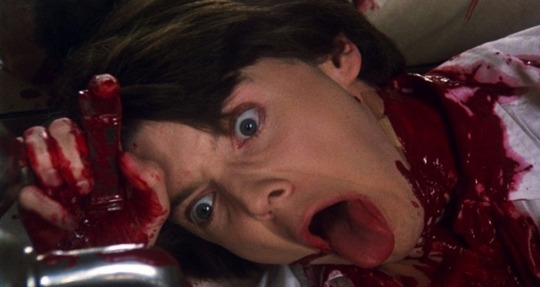


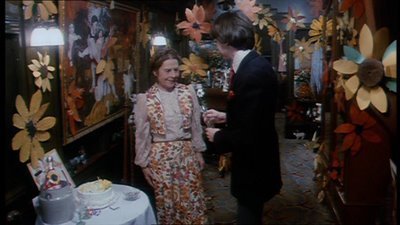



Harold et Maude (Harold and Maude)USA - 1971 Réalisation : Hal Ashby Scénario : Colin Higgins. Image : John A. Alonzo. Montage : William A. Sawyer, Edward Warschilka. Musique : Cat Stevens. Production : Colin Higgins, Charles Mulvehill. Interprétation : Ruth Gordon (Maude), Bud Cort (Harold), Vivian Pickles (Mrs Chasen), Cyril Cusack (Glaucus)... Date de sortie : 14 mars 2012 Durée : 1h31 Harold et Maude réalisé par Hal Ashby Harold aime Maude, Maude aime Harold. C’est ainsi que les deux héros résument de manière naïve la simplicité de leur histoire. Rien de très original si ce n’est que le jeune homme vient tout juste d’avoir dix-huit ans et que sa fiancée est sur le point de fêter ses quatre-vingts printemps. Rythmé par les chansons de Cat Stevens et avec un duo d’acteurs qui s’impose comme une évidence, ce petit bijou d’humour noir et de délicatesse est à redécouvrir d’urgence en copie neuve. Alors qu’avec Le Lauréat|analyse du film Le Lauréat (1968) et Un été 42 (1970), le cinéma post-flower power semblait avoir réglé son complexe d’Œdipe, Harold et Maude pousse le bouchon encore plus loin en imaginant une relation amoureuse entre un jeune garçon neurasthénique et une octogénaire excentrique, digne parente politisée de la Folle de Chaillot ou de la Madame Madrigal des Chroniques de San Francisco. Libertaire et trop dérangeant pour l’Amérique de Richard Nixon (pour se prévaloir de toute tôlée, la Paramount n’accepta pas qu’une scène d’amour entre les deux protagonistes soit tournée), le film fut d’abord un échec critique et public cuisant avant de voir sa carrière relancée grâce au très bon bouche-à-oreille sur les campus américains. Le réalisateur Hal Ashby, avant tout connu pour son excellent travail de monteur (il a été oscarisé pour le film Dans la chaleur de la nuit|critique du film Dans la chaleur de la nuit de Norman Jewinson) se rattrapera heureusement quelques années plus tard en rencontrant le succès avec Retour (1978), considéré comme l’un des meilleurs films sur la guerre du Viêt-Nam. Le public français, lui, fut beaucoup plus réceptif à cette histoire atypique qui sortit sur nos écrans fin 1972. À tel point qu’une adaptation théâtrale est montée par Madeleine Renaud et Jean-Louis Barrault. Colin Higgins qui venait juste d’adapter Harold et Maude participa également à cette transposition scénique en collaboration avec Jean-Claude Carrière, qui devint une pièce fétiche de Renaud-Barrault, reprise il y a dix ans par Danielle Darrieux. La réussite de Harold et Maude, c’est son parfait équilibre entre un humour macabre et une grande légèreté, sa faculté désinvolte à renverser les tonalités dans une même scène (comme ce passage bouleversant où Maude revient, les larmes aux yeux, sur la mort de son mari avant de proposer une danse à Harold, avec l’allégresse d’une petite fille) et à raconter avec une pudeur exemplaire une histoire d’amour qui n’a d’extraordinaire que son extrême évidence. Les séquences les plus réussies sont évidemment celles qui exploitent jusqu’au bout ces décalages sans avoir peur de flirter avec un surréalisme pince sans rire, quitte à devenir un ovni entre Tueurs pour dames et Six Feet Under. Les faux suicides d’Harold, hilarants dans leur absurdité, en sont les meilleurs exemples. Imaginez un peu la scène : le garçon noyé le corps en croix tel le héros de Sunset Boulevard|critique du film Sunset Boulevard (Boulevard du crépuscule), et sa bourgeoise de mère qui nage à ses côtés avec un calme olympien ; ou encore cette scène où la marâtre remplit pour son fils un questionnaire d’agence matrimonial et ce dernier qui se fait sauter la cervelle… sans susciter la moindre réaction. Il fallait oser, également, entourer l’histoire d’amour entre Harold et Maude d’une poésie funèbre. Tous deux adeptes des enterrements et de morbidité, ils se rencontrent en effet lors de diverses oraisons comme d’autres pique-assiettes auraient fait connaissance dans des soirées mondaines. Et c’est avec un malin plaisir qu’ils se permettent de voler les corbillards à la barbe de la police. Il est évident que Harold et Maude ne serait rien sans son duo d’acteurs impeccables. Protégé de Robert Altman avec qui il venait de tourner Mash, Bud Cort a d’abord hésité (de peur d’être ensuite catalogué dans ce genre de rôles) à jouer le rôle d’Harold. Bien mal lui en a pris puisque avec son teint gothique, sa bouille de gamin et ses grands yeux bleus, il apporte un trouble burtonien à son personnage. Dans le rôle de Maude, la pétillante Ruth Gordon s’impose comme une évidence, elle qui, dans sa longue carrière, a joué aussi bien les scénaristes féministes (elle a notamment signé pour Cukor les scénarios de Madame porte la culotte et de Mademoiselle Gagne-Tout|critique du film Mademoiselle Gagne-Tout) que les actrices maléfiques (la voisine diabolique du non moins fantastique Rosemary’s Baby|critique du film Rosemary’s Baby de Roman Polanski). La bande son admirable, signée Cat Stevens, rappelle des collaborations similaires dans le cinéma Hollywoodien de cette époque, notamment le travail de Simon & Garfunkel sur Le Lauréat ou des Bee Gees pour La Fièvre du samedi soir. Esthétiquement parlant, le réalisateur usant allègrement de la longue focale et n’ayant pas peur de proposer des champs/contrechamps audacieux ou des effets de style plutôt bien vus (la scène d’ouverture où l’on voit se préparer le premier suicide d’Harold à hauteur de pieds). Harold et Maude est donc bien un film de son temps et l’on comprend que pour l’époque, ce duo atypique était suffisamment transgressif pour que le film ne soit appréhendé que sous cet angle. Quarante ans plus tard, leur histoire d’amour peut être plus largement lue comme une allégorie libertaire de tous les couples en marge d’une société formatée par les carcans idéologiques et religieux. L’un des moments les plus ironiques du film est sans doute lorsque Harold annonce à sa mère son intention de se marier avec une femme de quatre-vingts ans. Juste après cet ersatz de coming-out, se succèdent trois plans fixes sur trois figures symboliques qui viennent donner leur avis sur une liaison inacceptable : l’oncle militaire (qui fait aussi office de figure patriarcale), le psychiatre et le curé. Quarante ans plus tard, c’est aussi le fond même de l’histoire qui nous saute aux yeux et l’omniprésence donnée à la mort. Harold, en effet, est dans une démarche presque pascalienne puisqu’il se divertit de la mort en la mettant en scène, non pas tant pour la conjurer que pour essayer de se rendre intéressant aux yeux de sa mère. Ce n’est pas un hasard que de toutes les prétendantes qui lui sont présentées, la seule envers qui il montre un semblant d’intérêt soit l’actrice, sobrement appelée Fleur d’Oranger, qui lui mime la mort de Juliette avec une emphase grotesque. D’une certaine manière, Maude prend également la mort en diversion. Mais à l’inverse d’Harold, cette hédoniste embrasse la vie et s’en sert de terrain de jeu. Elle se présente elle-même comme une révolutionnaire généreuse qui goûte aux plaisirs de la chair, à la joie de briser les codes et aux bienfaits de la nature (ce qui donne lieu à une séquence décalée où elle embarque un arbre en pot dans sa décapotable pour le replanter dans la forêt). Mais ce qui oppose les deux personnages, c’est qu’Harold n’a pas encore d’histoire. Comme il le dit lui-même avec ironie : « Je n’ai rien vécu, mais je suis mort plusieurs fois. » Par l’intermédiaire du personnage, Hal Ashby et Colin Higgins se moquent certainement d’une jeunesse bourgeoise attentiste qui croit qu’aux yeux des autres, la vie n’aurait de sens que dans la mort. L’optimisme de Maude, au contraire, est l’expression de ces générations qui sont passées par les horreurs imprescriptibles de la Seconde Guerre mondiale. Le sens profond de Harold et Maude pourrait alors être concentré dans une scène d’une pudeur exemplaire : les deux amoureux sont face à la mer, à admirer un coucher de soleil. Un regard d’Harold sur l’avant-bras dénudé de la vieille dame. Un numéro. La trace indélébile des camps de concentration. Il n’en sera pas plus raconté sur l’histoire de Maude et pourtant il en est déjà dit beaucoup.
#harold et maud#passion#a travers les âges#amour#comédie dramatique#ruth gordon#bud cort#cinéma américain#avoir 20 ans#amour pur et réciproque#maud#i love you
69 notes
·
View notes
Text
Escape From L.A.
BB.5 (out of 5) John Carpenter returns to his early eighties cult classic with virtually the same plot on a higher budget. Kurt Russell is in fine form (especially his hair) in his second outing as Snake Plissken, the renegade called upon to help the government when yet another major city that has become a sequestered war zone needs someone to go behind enemy lines on a recovery mission.…
View On WordPress
#A.J. Langer#Breckin Meyer#Bruce Campbell#Caroleen Feeney#Cliff Robertson#David Perrone#Debra Hill#Edward A. Warschilka#Gabriel Castillo#Gary B. Kibbe#Georges Corraface#Ina Romeo#Jeff Imada#John Carpenter#Jordan Baker#Kathleen Blanchard#Kurt Russell#Lawrence G. Paull#Leland Orser#Michelle Forbes#Nick Castle#Pam Grier#Paul Bartel#Peter Fonda#Peter Jason#Robert Carradine#Robin Michel Bush#Shelly Desai#Shirley Walker#Stacy Keach
0 notes
Text

Christopher Walken in Brainstorm (Douglas Trumbull, 1983)
Cast: Christopher Walken, Natalie Wood, Louise Fletcher, Cliff Robertson, Jordan Christopher, Donald Hotton, Alan Fudge, Joe Dorsey, Bill Morey, Jason Lively, Georgianne Walken. Screenplay: Bruce Joel Rubin, Robert Stitzel, Philip Frank Messina. Cinematography: Richard Yuricich. Production design: John Vallone. Film editing: Freeman A. Davies, Edward Warschilka. Music: James Horner.
Brainstorm is a sci-tech thriller based on a premise familiar to the genre: Brilliant scientists come up with a breakthrough and face the threat that it will be misused by nefarious forces. In older films, the nefarious forces tended to be foreign ones, Nazis or Commies. Today, however, they usually come from our own corporate-military-industrial complex. Working together, Dr. Michael Brace (Christopher Walken) and Dr. Lillian Reynolds (Louise Fletcher) have created a way to transmit the brainwaves of one person to another, stimulating not only the visual and audible sensations but also the bodily ones -- respiratory, muscular, etc. The transmissions can also be recorded and stored. It's virtual reality gone whole hog, especially after Brace's wife, Karen (Natalie Wood), an industrial designer, comes up with a snazzy little headset. Brace and Reynolds are hopeful for all sorts of peaceful uses of the technology, but to get funding for it, they have to agree with the head of the corporation for which they work, Alex Terson (Cliff Robertson), that it can be shown to investors. And you know who has the money to fund such a project. The inventors are dismayed at the prospect of misuse, but they put up with it until the real dangers of the invention show up. A researcher records himself having an orgasm and gives it to another man who plays it on a loop, sending himself into a coma from the experience. And then Reynolds herself, a chain smoker, has a heart attack and dies, but not before hauling herself to the device and recording the experience. Brace discovers the tape and almost dies playing it before he's able to disconnect. Finding that the company has kept the tape and has actually killed someone with it and is experimenting with other malign uses for the technology, Brace and Karen team up to find ways to stop it. It's a worthy premise, but Trumbull, a noted special effects director making his first (and only) feature in the director's chair, encountered a perfect storm of difficulties, the chief of which was Natalie Wood's death in 1981. Wood's major scenes in Brainstorm had already been filmed, but MGM, which was in financial difficulties, pulled the plug on the project. Fortunately, the production was insured by Lloyd's of London, which stepped in and allowed Trumbull to complete the movie. Wood's sister, Lana, doubled for her in the remaining scenes. Still, Brainstorm was not a critical or commercial success. There's a funny sequence in which Brace causes the robots on the assembly line to go haywire, and Fletcher's performance is great. Wood is fine, but Walken, a specialist in offbeat characters, seems miscast. The subplot, which involves the Braces using the technology to communicate their feelings to each other and repair their fraying marriage, is tedious and sentimental. And the concluding sequence, in which we find out what Reynolds saw when she was dying, is almost inevitably a letdown.
3 notes
·
View notes
Photo
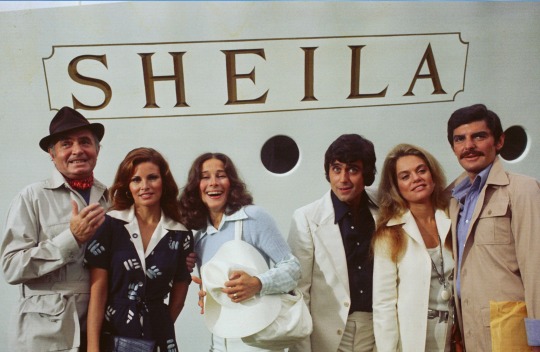
James Mason, Raquel Welch, Joan Hackett, Ian McShane, Dyan Cannon, and Richard Benjamin in The Last of Sheila (Herbert Ross, 1973)
Cast: Richard Benjamin, Dyan Cannon, James Coburn, Joan Hackett, James Mason, Ian McShane, Raquel Welch. Screenplay: Steven Sondheim, Anthony Perkins. Cinematography: Gerry Turpin. Production design: Ken Adam. Film editing: Edward Warschilka. Music: Billy Goldenberg.
Actor Anthony Perkins and songwriter Stephen Sondheim moonlighted as screenwriters to create this jeu d'esprit, a murder mystery involving the kind of elaborate games that Perkins and Sondheim and their friends used to play: treasure hunts with ingenious clues. The setup is this: A year earlier, Sheila, the wife of film producer Clifton Green (James Coburn), was killed in a hit-and-run accident. Green invites six people who were at a party the night of her death to spend a week on his yacht, which is named for her. Before they board, he arranges them for a photo under her name on the prow of the yacht. Then he announces that he is going to give each of them an envelope that contains a secret: something that a person would want to conceal about themselves. Each night, they will dock at a different location and will be given a clue that they must follow to discover the secret. If the person who holds the card with the secret on it solves the puzzle, the hunt of the night is over. So, on the first night, the clues lead to the secret: "Shoplifter." And when Philip (James Mason), a washed-up film director who holds that clue, solves it, the game ends. But the next night, the game isn't completed: Green has been found murdered during the hunt. Meanwhile, realization dawns in the group that the secrets were their own: Philip wasn't a shoplifter, but the actress named Alice (Raquel Welch) admits that she once lifted a valuable fur coat from a store. And when the secret for the night Green is killed is revealed to be "Homosexual," Tom (Richard Benjamin), a screenwriter, admits that he and Green once had a brief affair. And so it appears that Green was murdered by someone who didn't want their secret to come out. But just when it appears that the murder has been solved, there's another intricate twist. The screenplay is fiendishly clever, and it's well acted: The other players include Dyan Cannon as a high-powered agent, Joan Hackett as Tom's rich heiress wife, and Ian McShane as Alice's manager-husband. Unfortunately, Herbert Ross directs things a little clunkily, although some of the awkwardness may come from the fact that shooting began on the yacht itself, but bad weather held up the shoot and sets eventually had to be constructed on a soundstage. There was also reportedly some conflict among the cast members and the director, centering on Welch. Today, some of the film's attitudes seem a little antique: Homosexuality is no longer such a terrible secret, although at the time Perkins and Sondheim, both of whom were gay, were still closeted. And perhaps not enough is made of the fact that one of the clues outs a character as a former child molester. The resulting film is something like a soufflé that didn't rise, turning out tasty but a little lumpy. The best moments belong to, not surprisingly, Cannon, one of those performers who make every film they're in a little better.
#The Last of Sheila#Herbert Ross#James Mason#Raquel Welch#Joan Hackett#Ian McShane#Dyan Cannon#Richard Benjamin
3 notes
·
View notes
Photo
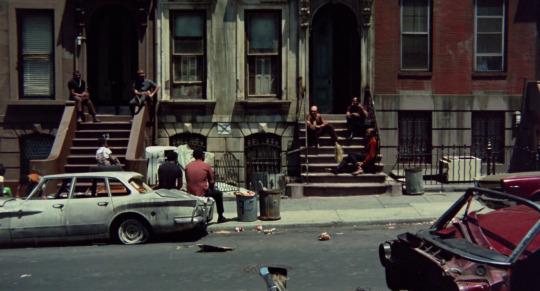


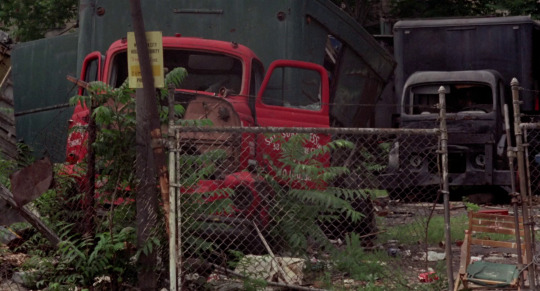
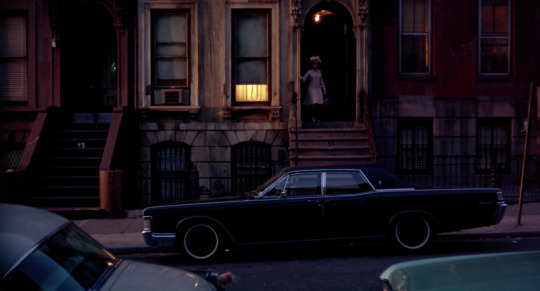
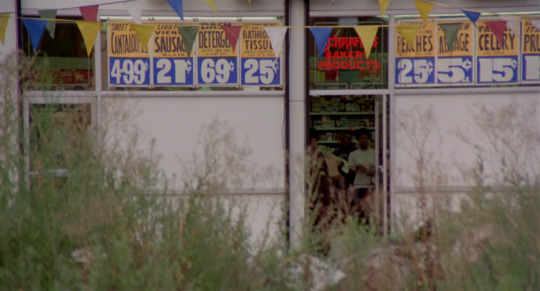
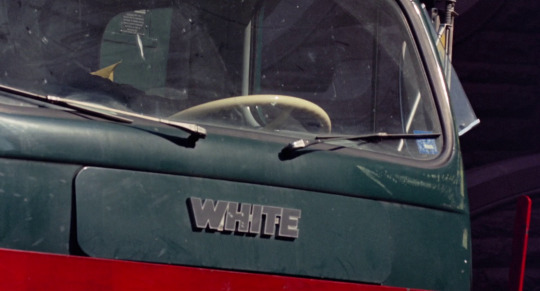
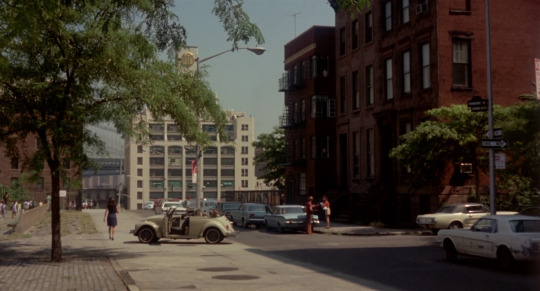

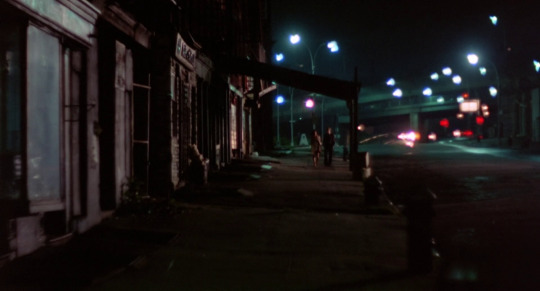
The Landlord (Hal Ashby, 1970).
#the landlord#the landlord (1970)#hal ashby#gordon willis#william a. sawyer#edward warschilka#robert f. boyle#john godfrey#domingo a. rodriguez
118 notes
·
View notes
Photo
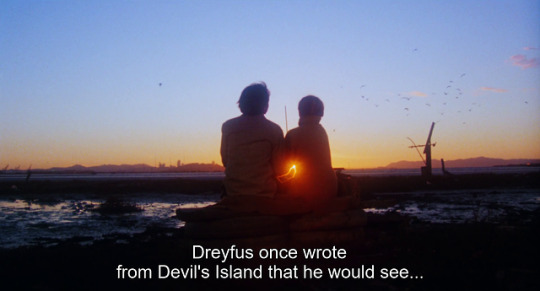
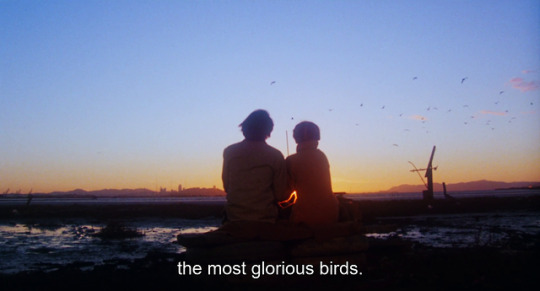
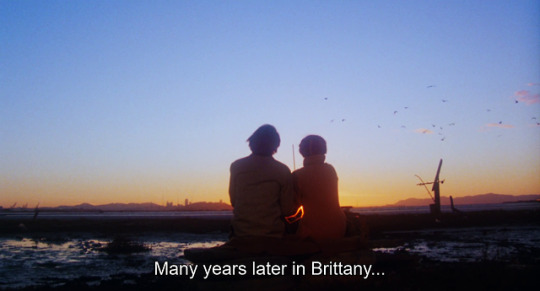
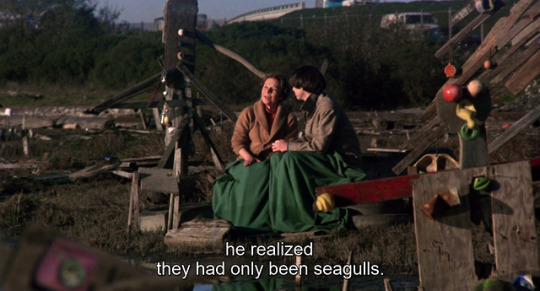



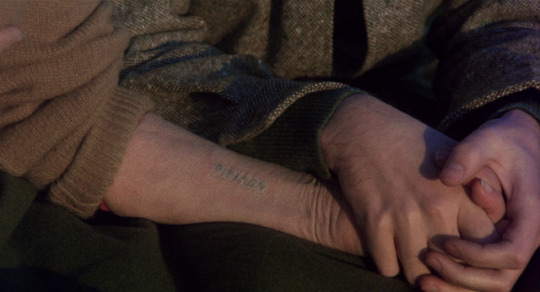


Harold and Maude (Hal Ashby, 1971).
#harold and maude (1971)#harold and maude#hal ashby#colin higgins#ruth gordon#bud cort#john a. alonzo#william a. sawyer#edward warschilka#michael d. haller#william ware theiss
376 notes
·
View notes
Photo

Forget whatever you've seen in the movies: they don't turn into bats, crosses don't work. Garlic? You wanna try garlic? You could stand there with garlic around your neck and one of these buggers will bend you fucking over and take a walk up your strada-chocolata while he's suckin' the blood outta your neck, all right? And they don't sleep in coffins lined in taffeta. You wanna kill one, you drive a wooden stake right through his fuckin' heart. Sunlight turns 'em into crispy critters.
Vampires, John Carpenter (1998)
#John Carpenter#Don Jakoby#James Woods#Daniel Baldwin#Sheryl Lee#Thomas Ian Griffith#Maximilian Schell#Tim Guinee#Mark Boone Junior#Cary Hiroyuki Tagawa#Gregory Sierra#Thomas Rosales Jr.#Gary B. Kibbe#Edward A. Warschilka#1998
14 notes
·
View notes
Photo

I'm not into politics. I'm into survival.
The Running Man, Paul Michael Glaser (1987)
#Paul Michael Glaser#Steven E. de Souza#Arnold Schwarzenegger#Maria Conchita Alonso#Yaphet Kotto#Jim Brown#Jesse Ventura#Erland van Lidth#Marvin J. McIntyre#Gus Rethwisch#Professor Toru Tanaka#Richard Dawson#Mick Fleetwood#Dweezil Zappa#Thomas Del Ruth#Harold Faltermeyer#Mark Warner#Edward A. Warschilka#John Wright#1987
11 notes
·
View notes
Photo

- Emotion is irrelevant, it is not our nature.
- I'm not sure you're right about that, Mara.
- Still you are aware of the others so you must be in some basic sense aware of who... what we are.
Village of the Damned, John Carpenter (1995)
#John Carpenter#David Himmelstein#Christopher Reeve#Kirstie Alley#Linda Kozlowski#Michael Paré#Meredith Salenger#Mark Hamill#Pippa Pearthree#Peter Jason#Constance Forslund#Karen Kahn#Thomas Dekker#Gary B. Kibbe#Dave Davies#Edward A. Warschilka#1995
3 notes
·
View notes
Photo

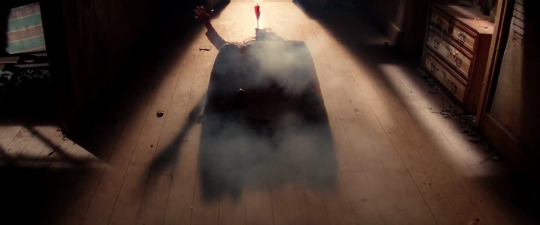
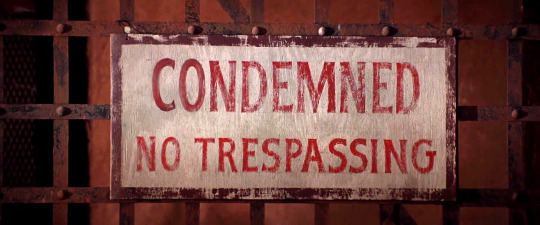
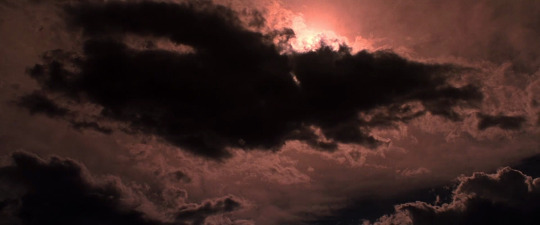
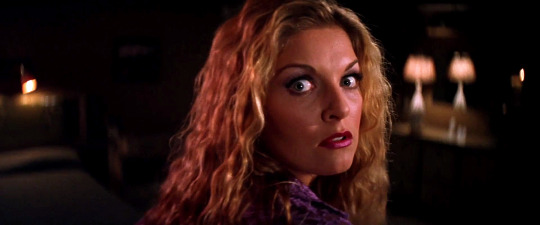



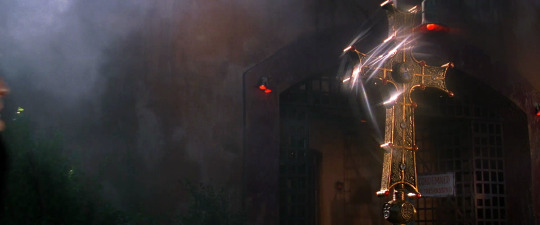

Vampires (John Carpenter, 1998).
#vampires (1998)#john carpenter#edward a. warschilka#gary b. kibbe#thomas a. walsh#don jakoby#vampires#john steakley#james woods#sheryl lee#sesión de madrugada#sesiondemadrugada#movie stills#movie frames#diego salgado
338 notes
·
View notes